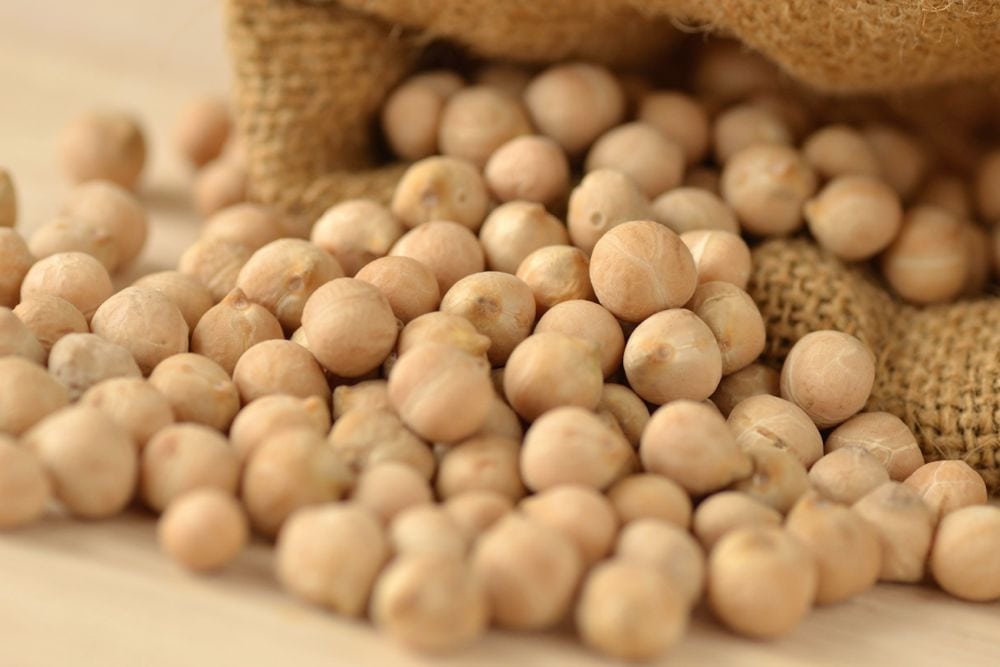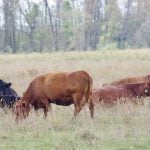Glacier FarmMedia — Western Canadian chickpeas have shown relative price stability, while prices have dropped for lentils and peas as those face trade obstacles.
Colin Young, manager at Mid-West Grain Ltd. in Moose Jaw, Sask., said while chickpeas haven’t been “immune to the pallor” affecting other commodities, they haven’t seen big gains either. He added that they are in the tail-end of a two-year decline before prices start to come up again.
“I think the market’s stable in the high-(20 cents per pound) to the grower. Whether you call it 26 to 29, I don’t see anything that’s going to push bids over 30 and I don’t see anything that will make it collapse close to red lentil prices,” Young explained.
Read Also

U.S. livestock: ‘Relentless’ fund selling knocks down CME cattle futures
Chicago | Reuters – U.S. cattle futures fell further at the Chicago Mercantile Exchange on Thursday under pressure from fund…
Prairie Ag Hotwire reported Kabuli chickpeas from eight to 10 mm in diameter had delivered bids of 27 to 34 cents per pound as of Nov. 19.
The growing season in Saskatchewan was “typical”, Young said, as chickpeas returned to early-fall harvests after years of drought conditions forced early combining. Pending Statistics Canada’s production update on Dec. 4, StatCan estimated 292,600 tonnes were harvested in Saskatchewan this year, the largest amount since 2001. The projected yield of 1.504 tonnes per hectare was also the highest since 2022. However, there were some areas of the province which saw difficulties.
“There was a frost event around Sept. 6 that absolutely affected the crops … east of Moose Jaw,” Young said. “In the Weyburn and Estevan area, they were extremely late (due to rain) and didn’t get their stuff harvested until October into November … Very surprisingly, southwest of Swift Current, they had some pretty big storm events in early-August.”
He added that 30 per cent of the chickpea crop would be graded “number two”, 40 per cent were frost-damaged at “number-three to sample grade” and the rest were feed grade.
“The September frost event, combined with the regrowth and later harvest absolutely affected the quality of chickpeas this year,” Young said.
Demand for Canadian chickpeas were “robust”, but they face stiff competition from Russia, the United States, Turkey and Argentina. Young estimated that Canada grew enough chickpeas to supply two year’s worth of global pet food demand for the crop.
“If we can meet the price point our buyers are willing to pay, we have very good prospects of sales. The problem with the price point where the buyers want to be is that it means resistance from growers,” he added.
Agriculture and Agri-Food Canada, in its October report, projected carryout stocks for 2025-26 to more than double from the previous year at 145,000 tonnes nationwide. Young expects chickpea prices to stay sideways with “slight downward pressure” in the short term, but prices will slowly increase in the long term.
“I believe we’re entering into the lower end of the price spectrum for the next several crops,” he said. “When I say that, over time, the price of chickpeas will go up, I believe that. However, I feel that the likelihood of a significant change in chickpea prices over the next 12 months is quite low.”
















